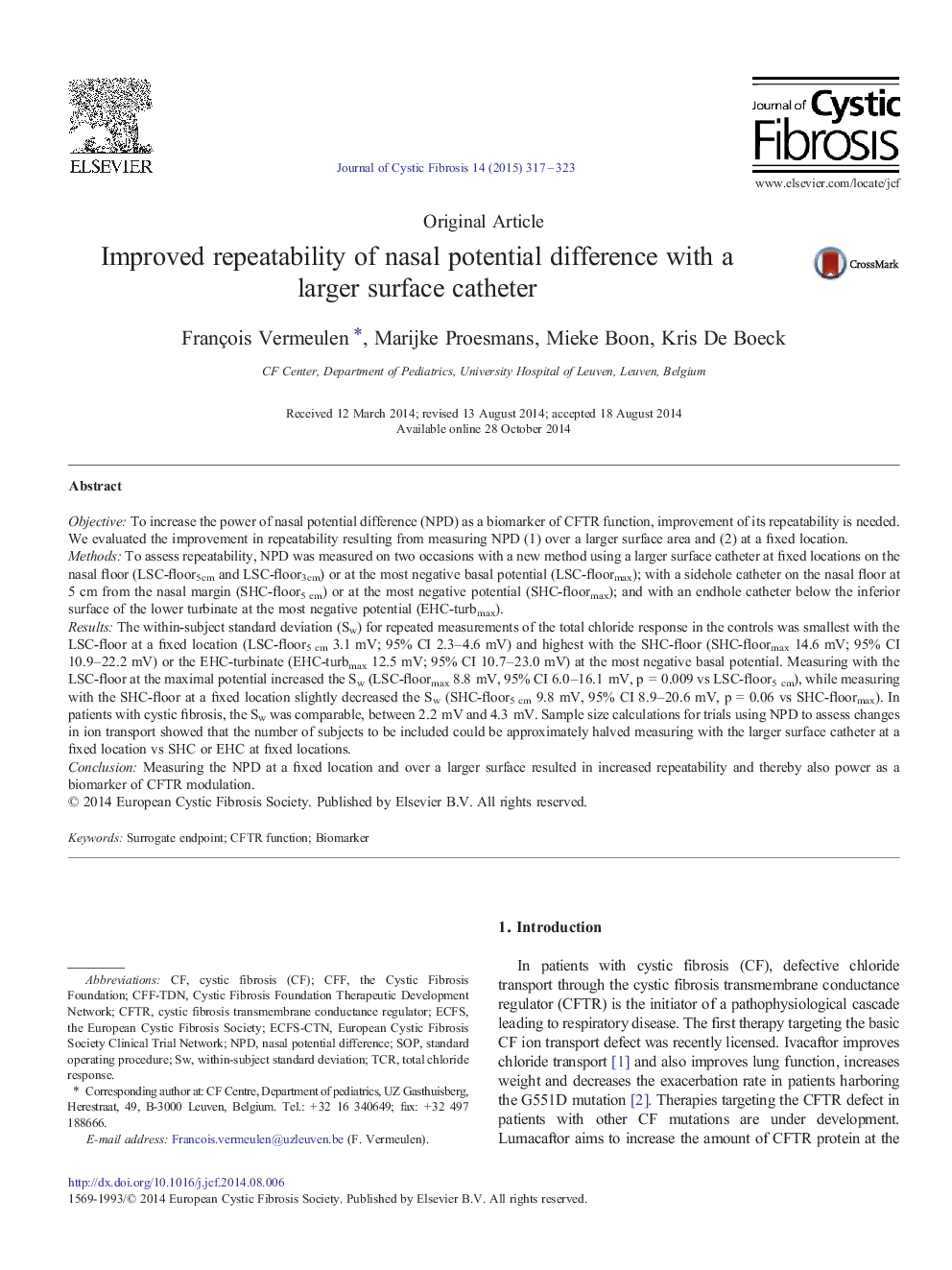| Article ID | Journal | Published Year | Pages | File Type |
|---|---|---|---|---|
| 4208063 | Journal of Cystic Fibrosis | 2015 | 7 Pages |
ObjectiveTo increase the power of nasal potential difference (NPD) as a biomarker of CFTR function, improvement of its repeatability is needed. We evaluated the improvement in repeatability resulting from measuring NPD (1) over a larger surface area and (2) at a fixed location.MethodsTo assess repeatability, NPD was measured on two occasions with a new method using a larger surface catheter at fixed locations on the nasal floor (LSC-floor5cm and LSC-floor3cm) or at the most negative basal potential (LSC-floormax); with a sidehole catheter on the nasal floor at 5 cm from the nasal margin (SHC-floor5 cm) or at the most negative potential (SHC-floormax); and with an endhole catheter below the inferior surface of the lower turbinate at the most negative potential (EHC-turbmax).ResultsThe within-subject standard deviation (Sw) for repeated measurements of the total chloride response in the controls was smallest with the LSC-floor at a fixed location (LSC-floor5 cm 3.1 mV; 95% CI 2.3–4.6 mV) and highest with the SHC-floor (SHC-floormax 14.6 mV; 95% CI 10.9–22.2 mV) or the EHC-turbinate (EHC-turbmax 12.5 mV; 95% CI 10.7–23.0 mV) at the most negative basal potential. Measuring with the LSC-floor at the maximal potential increased the Sw (LSC-floormax 8.8 mV, 95% CI 6.0–16.1 mV, p = 0.009 vs LSC-floor5 cm), while measuring with the SHC-floor at a fixed location slightly decreased the Sw (SHC-floor5 cm 9.8 mV, 95% CI 8.9–20.6 mV, p = 0.06 vs SHC-floormax). In patients with cystic fibrosis, the Sw was comparable, between 2.2 mV and 4.3 mV. Sample size calculations for trials using NPD to assess changes in ion transport showed that the number of subjects to be included could be approximately halved measuring with the larger surface catheter at a fixed location vs SHC or EHC at fixed locations.ConclusionMeasuring the NPD at a fixed location and over a larger surface resulted in increased repeatability and thereby also power as a biomarker of CFTR modulation.
